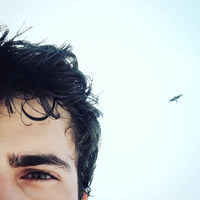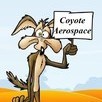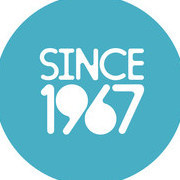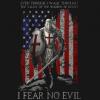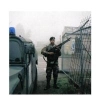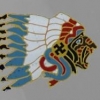Leaderboard
Popular Content
Showing most liked content on 12/03/2021 in Posts
-
5 points
-
4 pointsHorn of Africa (1977-1990) Blue Side: Somalia, Djibouti, North Yemen Red Side: Ethiopia, South Yemen Horn of Africa (1993-2028) Blue Side: Ethiopia, Somalia, Djibouti Red Side: Eritrea, Yemen
-
3 pointsJust for your information, eburger's package is much outdated and very inaccurate on many aspects (wrong topography of the terrain, inaccurate placement and start dates of air units, fictive IrAF order of battle and inaccurate order of battle of the Coalition, and so on). Since January of this year, ODS 30AE offers a much more accurate representation of the Gulf War and of its theater of operations; it has been made from scratch and shares very little with the old package. Christmas is around the corner, an update should happen by then.
-
3 pointsIf you note carefully, the following values are different in those two data inis: CLmax=0.29084 AlphaStall=17.50 AlphaMax=18.73 AlphaDepart=22.23 StallMoment=-0.002 StallDrag=0.0227 Easiest way to create a more spin-prone FM is to lower those alpha stall/max/depart values. Of further significance is to pop in a stalldrag value (Capun's data ini has one, the other data ini doesn't). Another interesting bit of info.: those stallmoment values of negative 0.002 are close to no stallmoment value at all - slightly nose-down, mushy stalls when a negative no. is placed there - a nastier, nose-up stall if a positive value is there instead. We have some nicely spin-prone aircraft in FE2 courtesy of toggling and tweaking of the entries listed above. General suggestions: default TW stallmoment value (in FE2) = -0.02 (mushy, nose down stall) never exceed value for harsh, nose-up stalls (have tested this, AI do not like when it goes above this number) = 0.02 recommended values for mushy, nose-down stalls = -0.005 to -0.015 recommended values for harsher, nose-up stalls (such as for WW1 aircraft, also "Widow Makers" (F-104s) and other jet-age pocket rockets) = 0.005 to 0.015 values closer to zero are of course gentler in either range of numbers (positive, nose-up, or negative, nose-down) For more spin-prone wings, check alphastall/max/depart values, also CLmax values, for tip/middle/root sections of wings (also doesn't hurt to check such values for the left/right stab entries too). To induce very spin-prone aircraft, avoid alpha-related values higher than about 13.00 or 14.00. For example: AlphaStall=11.00 AlphaMax=13.00 AlphaDepart=13.50 One more (obscure) tip: the "Chord" values that are included in some data inis, per wing tip/middle/root sections, while not central to spin characteristics, may be manipulated somewhat for a slightly different FM feel. Chord values are in meters, by the way. I see that the chord value used in those entries you've quoted in this thread is "1.11." If you want a narrower chord and more spin-related oddities, pull that value down to about 0.95 or so. Changes in chord of about +/- 0.2 (20 cm added or removed) do impact (in subtle ways) how things like lift, drag, also stall behavior, work. Recommended however is to leave chord values alone if not comfortable tampering with them, and to manipulate alphastall/max/depart values instead, by values of about 2.00 - until you get desired and/or historical, textbook-recorded stall results. It's possible to get good/realistic FMs in the TW series but it takes time. Avoid tweaking "CLmax," by the way, unless comfortable with that - because it can improve wing lift too much, into unhistorical values/ranges - particularly for jet-age stuff. And yes, the AI will "honor" all data ini values implemented in said files - as far as I've been able to see in FE2, there will be no cheating by the AI (except maybe when landing but that's not a major concern). Cheers to all from your friendly neighborhood WW1 aircraft FM factory , Von S
-
2 points
-
2 pointsBristol Beagle Mk.II - No.29 Squadron, RAF Fighter Command, 1938 After a poor start the Bristol F.2 'Brisfit' reconnaissance-fighter was successfully developed into the robust and manoeuvrable F.2B two-seat fighter - an aircraft capable of holding its own against most single-seat fighters during the latter part of WW1. In the immediate post-war period the aircraft was further developed into the F.2B Mk.II equipped with desert equipment and a tropical cooling system for army co-operation and air policing duties. During the 1920's Bristol developed and introduced numerous variants and derivatives of the aircraft with revised tail units and strengthened undercarriages. Even after production finished in 1927, Bristol enjoyed several years of manufacturing spares and refurbishing the aircraft for continued service into the 1930's. In late 1927, as a private venture, the board of the Bristol Aeroplane Company asked their chief designer Frank Barnwell to design and develop a multi-role successor to the F.2B for the decade ahead - naturally stipulating that the new aircraft should use an 'in house' Bristol engine. Barnwell was aware that Roy Fedden was working on the nine-cylinder Pegasus radial engine as a follow-on to the successful Jupiter engine but using a shorter stroke to increase the revolutions per minute and including a supercharger for added power. On the expected power output of the Pegasus engine (635h.p.) Barnwell schemed a much larger aircraft than the F.2B with a near doubling of the all-up weight to 5,600lb making the new aircraft suitable for a variety of roles such as light bomber, reconnaissance-fighter, army co-operation and night fighter. Designated as the Bristol Type 119, Frank Barnwell designed a single-bay biplane with staggered wings braced by wires in the centre section only. The fabric-covered fuselage was of metal construction using members built up from rolled high-tensile steel strips riveted together and essentially similar to the earlier Bristol Bulldog single-seat fighter. The Pegasus engine installation was neatly cowled with a Townend ring. Under the fuselage the strong undercarriage was divided and attached to the fuselage with streamlined legs and struts. The pilot's cockpit was positioned below a shallow cutout in the trailing edge of the upper wing with the observer's cockpit positioned behind the pilot and featuring a twin Lewis Gun installation mounted on a Scarff ring. Bombs could be carried on three external hardpoints under the fuselage and the lower wings carried a pair of podded .303 Browning machine guns that were belt-fed with 400 rounds per gun. Development moved swiftly and the first prototype took to the air at Filton on January 18th, 1931 piloted by Cyril Uwins. Bristol's bold private venture investment soon paid off with almost immediate Air Ministry interest in the Type 119 during the Spring of 1931 soon followed by an order for 90 Type 119 aircraft to the specially created Air Ministry Specification G.3/31 calling for a two-seat general-purpose light bomber. These were manufactured as the Bristol Beagle Mk.I and entered service with No.35 Squadron at Bircham Newton in April 1933. As an almost parallel programme, Bristol were awarded a contract for 60 aircraft to the new Air Ministry Specification F.6/31 calling for a two-seat general purpose fighter and these were manufactured as the Bristol Beagle Mk.II differing only in the deletion of the three external hardpoints. Entering service with No.29 Squadron in June 1933 the Beagle Mk.II's also served with No.64 Squadron as Home Defence night-fighters and were still in service at the time of the Munich Crisis in September 1938. Skin Credit: Monty CZ
-
2 points
-
2 pointsHey VonS! What do you think on a Fokker DR.1 with F-4 Phantom´s FM? Just kidding...
-
2 points
-
2 pointsCome on, there is definitely cheating from the AI ! When you fly with afterburner on and the wingman follow with military power, when you cannot take-off because you're overloaded and the wingman has no problem, etc... With the debug screen the game engine changes the weight for AI to take-off (I read somewhere in the forum lol ) Maybe less in First Eagle, but definitely in Strike Fighter
-
2 points
-
1 pointHello P-51 Lovers! We know you’ve been waiting patiently to see more of the P-51B, so today we show you what it looks like both inside and out! This new ‘Pony’ should be ready by the end of this month. It’s the Holiday Season and a time for giving, so there will likely be two updates in December! One with the new clouds and the DFWC.V and the other with the P-51B and maybe, just maybe new fuel systems and drop tanks for several Bf-109 variants. Of course, plans are subject to change pending testing. And as mentioned previously the Malcolm Hood has taken extra work to get it right, so that component is not ready to be shown yet. Without further delay… Enjoy! The Sturmovik Team
-
1 pointHello everyone, If you have Combined Arms module, AND you are interrested in a Anti submarine Mission using S-3 Viking ; you might want to take a look at my mission here ; https://forums.eagle.ru/topic/288080-submarine-hunt-missionmini-game/ But to get that picture, you will have to find it and successfully attack it. Have a good one...
-
1 pointThat's what I found every time in the Single Mission of EBurger's Operation Desert Storm, the target is supposed to be a "SAM site"... Is this ok? A barrel? Or I miss something in ground objects? Thanks
-
1 point
-
1 pointHello Friends! Happy Monday to everyone! We have a short DD for you today that features the DFW C.V for Flying Circus Vol. II and new 4K skins for our old friend the Yak-1b which were crafted once again by our partner Martin “ICDP” Catney. The Yak-1b completes our initial goal of bringing all aircraft and tank skins along with their templates up to the 4K standard. It took several years, but what an accomplishment!! Thanks again to Martin, Francisco (BlackHellhound1) and Marcus (Raptorattacker) for helping make all this possible! DFW C.V Yak-1b 4K Skins The DFW C.V, Yak-1b 4K skins and our initial release of our new clouds will be in the upcoming 4.701 update later in December. Which we pray to all mighty Jesus, Allah, Buddha, Yahweh, Zeus, Lucifer, Cthulhu, Thanos, General Zod or whatever powerful deity controls its fate, please give us the strength to finish the P-51B so we can include it in update 4.701! Enjoy! The Sturmovik Team
-
1 pointDear Friends, Welcome to a rare Monday edition that is our 300th Developer Diary which happens to coincide with the 20th anniversary of the release of the original IL-2 Sturmovik for the PC! Two decades on and IL-2 products are still going strong! Simply amazing! We know you would like this to be a super special diary today, but for us, it’s just another busy week at work trying to finish our projects. Please don’t think that we are not proud of this milestone, because we are, but there is just so much to do and we need to stay on task! However, we hope that there will be 300 more DDs and 20 more years of Sturmovik products to come! We also realize that we could not have gotten this far without the financial support of our customers and those dedicated people in our community that help us make Sturmovik week after week. We salute anyone and everyone who has contributed to the Great Battles series over the years either as an unpaid volunteer or professional partner. From painting skins to developing apps, making missions to beta testing, 3D modeling to historical to research, localization of text to voice acting and on and on, this 300th Developer Diary is dedicated to you guys! THANK YOU! No DD is complete without some news and images about current projects and today’s is no exception. Both of these projects have been undertaken by third-party partners – the C-47 cockpit is being built by Ugra Media and the IAR-80/81 is being built by our partner Ivan. Both of these models have been shown before and they have progressed since we last showed them, even if their appearance is not drastically different from before. There is lots of work being done to keep the poly and texture budgets under control and make the model not only beautiful, but also efficient. This is always a big challenge for anyone who makes models for us. C-47A IAR-80/81 The IAR will likely go on Pre-Order next week as well as our two new Collector Tanks which Jason will also announce next week. Enjoy! The Sturmovik Team
-
1 pointAs far as I'm concerned, for the F-86A I would say : [LeftWing] ... CheckStall=TRUE CLmax=0.1748 AlphaStall=13.50 AlphaMax=17.00 AlphaDepart=22.00 Chord=2.41 Ymac=-1.38 [RightWing] ... CheckStall=TRUE CLmax=0.1748 AlphaStall=13.50 AlphaMax=17.00 AlphaDepart=22.00 Chord=2.41 Ymac=1.38 [LeftOuterWing] ... CheckStall=TRUE CLmax=0.2819 AlphaStall=12.50 AlphaMax=17.0 AlphaDepart=22.00 Chord=1.84 Ymac=-4.05 [RightOuterWing] ... CheckStall=TRUE CLmax=0.2819 AlphaStall=12.50 AlphaMax=17.0 AlphaDepart=22.00 StallMoment=0.019 Chord=1.84 Ymac=4.05 [LeftStab] ... CheckStall=TRUE CLmax=0.0864 AlphaStall=22.0 AlphaMax=28.0 AlphaDepart=32.0 Chord=1.11 Ymac=-0.82 [RightStab] ... CheckStall=TRUE CLmax=0.0864 AlphaStall=22.0 AlphaMax=28.0 AlphaDepart=32.0 Chord=1.11 Ymac=0.82 I can't tell for the F-86F, but the only thing I did was deleting the StallMoment / StallDrag / PostStallCma / StallHysteresis / StallLiftTable / StallDragTable / StallXacShiftTable entries and let the good FM do its thing (the KAW one ^^). For the test flight I did a vertical ressource and waited until it departed. It spinned.
-
1 pointTK wanted the SF series to be "light", i.e. fun to fly without horrible handling characteristics. So most stock FMs produce a simple stall that just "mushes" out in a stable way. Since the flight models don't have the elements that are required to accurately model departing controlled flight, asymmetrical data at high AoAs can be used to create a decent effect. The one aircraft TK didn't dumb down the handling characteristics and perhaps made it even harder than reality was the English Electric Lightning. But I complained about it: if a hard-wing F-4 isn't going to depart at high AoA like is should, why should the Lighting? While the Lightning remains one of the more difficult aircraft to fly, TK apparently agreed with my argument and dumbed down the difficulty a bit to be more in line with the other SF2 aircraft that should otherwise be very difficult to fly in some areas of the envelope: i.e. the F-100 and F-104 should be able to kill you instantly under certain conditions, instead they have very docile flight models compared to reality. When TK started "dumbing down" SF2 in later patches, I gave up trying to make SF2 more realistic. I fly DCS World for the flight models, SF2 for the amazing range of aircraft and historical environments available.
-
1 pointNot at all. All the parts count : Fuselage / Left & Right Wings / Left & Right Outer wings / VerticalTail / Left & Right Stab - engines - control surfaces - weapon stations - fuel tanks - landing gear Even "HasAeroCoefficients=FALSE" (Nose or Tail) part has a influence on the flight model when they have "massfraction" and "MinMaxExtents" values. (When they don't have massfraction entry at all, the weight is divided between parts that don't have massfraction entries. So "massfraction=0.0" is "not having a mass fraction value", and the lack of the entry gives a weight anyway.) If you want the F-4 to fly like F-86 you just copy/paste the F-86 data.ini and keep the F-4 structural parts (good luck with that...). It will be a total mess, won't work in game like you wanted at the start, and you'll had lost a huge amount of time doing so. You're welcome ! There's some special stall depart /spin lines "CheckStall=TRUE" and what is coming next. But the effect is very artificial. It triggers a stall spin, and several parts can have it (wings / outerwings / stabs) You can make an aircraft stall and the recovery impossible to do. You need at least one part of the lift surface in order to have the aircraft landing correctly (L/R wings and/or L/R outer wings) but the best spins that allow realistic recovery are made from a good flight model that don't call for these entries. Most of the time the less I use these stall entries the better is the stalling - spinning - recovering behaviour (as long as the FM is really working... take-off - flight - landing) I really don't like when I land and while rolling on the ground, as I slow down, these entries trigger a stall depart and the aircraft crashes on the runway AFTER the landing (ThirdWire Spitfire9 in hard mode)
-
1 pointEverything in the data.ini file. The AI aircrafts have their own mode for the flight model behaviour. It's never "hard mode" but some features apply though, that you don't have when flying "normal" as a player. And the game engine has something to do with the AI flights. You can use some entries in the data.ini file [AIData] but you'll never control them 100% with that part. There's some cheating as well (20 000 ft on way point 9 and on the glide slop in few seconds..., no collision point between wingmen on the runway, etc...)
-
1 point
-
1 point
-
1 point
-
1 point
-
1 point
-
1 point
-
1 point
-
1 pointHey GKABS! Love your traces smoke. Any link for them? Mandatory screen
-
1 point
Important Information
By using this site, you agree to our Terms of Use, Privacy Policy, and We have placed cookies on your device to help make this website better. You can adjust your cookie settings, otherwise we'll assume you're okay to continue..


